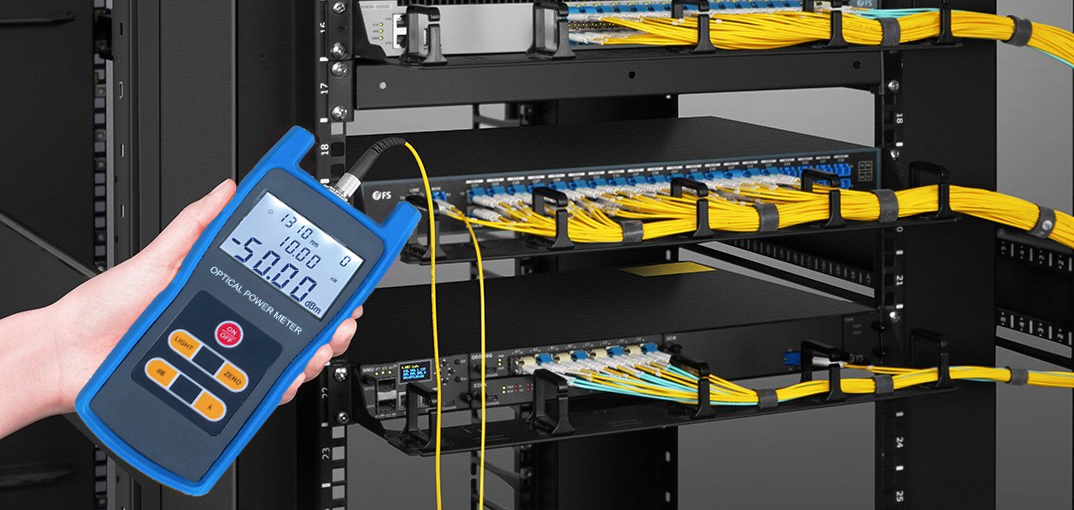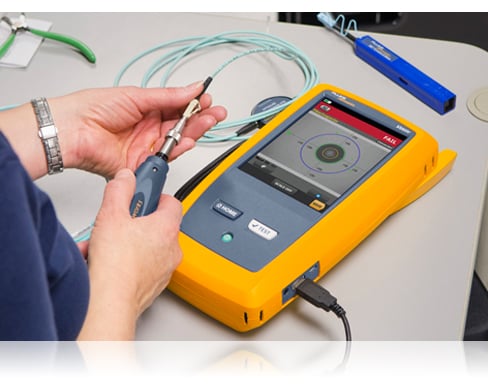High-performance fibre testing equipment is essential for accurate material quality assessment.
High-performance fibre testing equipment is essential for accurate material quality assessment.
Blog Article
Discover the Significance of Optical Fiber Testing in Modern Telecom
In the world of modern telecommunications, the relevance of optical fiber screening can not be overemphasized, as it functions as the backbone for guaranteeing network dependability and performance. By applying normal screening procedures, operators can preemptively recognize possible issues such as signal deterioration, hence securing versus disruptions that could confirm expensive. Advanced methods like Optical Time-Domain Reflectometry play an essential role in this procedure, yet many may forget the more comprehensive effects of these methods. What are the specific advantages that normal testing deals, and exactly how might it form the future landscape of telecommunications?

Comprehending Optical Fibre Testing
Optical fibre screening is a crucial procedure in telecommunications that makes certain the integrity and performance of fibre optic networks. This screening encompasses a variety of procedures developed to review the physical and functional characteristics of optical fibres - fibre testing equipment. Key criteria evaluated consist of optical power loss, data transfer capacity, and mistake location, which are crucial for keeping high-grade communication web links
The testing process usually involves making use of specialized tools such as Optical Time-Domain Reflectometers (OTDR) and Optical Power Meters. OTDRs are used to recognize and characterize mistakes, entwines, and adapters within the fibre, while power meters measure the transmitted light signal toughness to ascertain performance.
Furthermore, testing is carried out at numerous stages, consisting of throughout installation, maintenance, and troubleshooting, to make certain that the network fulfills market standards and operational demands. Conformity with standards established by companies like the International Telecommunication Union (ITU) and the Telecoms Market Association (TIA) is vital.
Benefits of Regular Testing
Normal screening of optical fibres yields countless advantages that dramatically boost network dependability and efficiency. Among the primary advantages is the early discovery of potential concerns, such as breaks or deterioration in the fiber, which can result in costly downtime if left unaddressed (optical fibre diameter analyser). By identifying these problems proactively, telecoms suppliers can decrease solution disturbances and guarantee regular connectivity for their clients
In addition, normal screening helps to preserve the honesty of signal quality. As optical fibres age, their efficiency can be impacted by variables such as ecological problems and physical stress and anxiety. Regular assessments enable for the surveillance of signal loss and general transmission efficacy, making sure that the network operates at optimal degrees.
One more considerable benefit is compliance with market requirements. Regular screening sustains adherence to regulatory requirements, therefore alleviating legal and economic threats related to non-compliance. It improves the overall life expectancy of the fibre framework by facilitating prompt upkeep and repair services.

Usual Checking Techniques
Checking optical fibers employs various techniques to make certain the stability and efficiency of telecommunications networks. Among one of the most usual methods is Optical Time Domain Name Reflectometry (OTDR), which assesses the entire length of the fibre by sending out a pulse of light and gauging the representations triggered by flaws or breaks. This approach gives in-depth information concerning the area and seriousness of mistakes.
An additional prevalent approach is the use of Optical Power Meters, which determine the amount of light transferred via the fiber. This strategy helps establish the loss of signal strength, guaranteeing that it fulfills industry standards. In Addition, Aesthetic Mistake Locators (VFL) are used to determine breaks or serious bends in the fiber by forecasting a noticeable laser light right into the cord.
Insertion loss testing is also critical, as it evaluates the loss of signal power resulting from connections and entwines within the network. The usage of Polarization Setting Dispersion (PMD) screening assesses the impact of fiber attributes on signal honesty.
Each of these methods plays an essential role in keeping the efficiency and reliability of optical fibre networks, ultimately contributing to seamless telecommunications operations.
Impact on Network Performance
The stability and performance of optical visit fiber networks directly affect overall network performance. In modern telecoms, the performance of information transmission counts greatly on the high quality of the optical fibers utilized. Any degradation in the fiber's problem-- whether because of physical damage, contamination, or extreme flexing-- can cause raised depletion and signal loss, dramatically impacting data stability and speed.
Normal optical fiber testing is vital to determine and remedy possible concerns before they materialize as network failings or downturns. Techniques such as Optical Time Domain Reflectometry (OTDR) and insertion loss testing enable professionals to determine the efficiency of fibre you can check here web links precisely. These tests not just review the physical condition of the fibres however also make certain conformity with sector criteria, consequently safeguarding the network's dependability.
Furthermore, a properly maintained optical fiber network contributes to decreased functional prices and enhanced customer fulfillment, as end-users experience less interruptions and greater information prices. Ultimately, the focus on rigorous optical fiber testing techniques serves as a foundation for sustaining robust telecoms infrastructure, guaranteeing that provider can meet the growing needs for transmission capacity and connection in today's digital age.
Future Fads in Examining
As we look in advance, developments in modern technology are poised to reshape optical fibre testing in telecoms. The increase of automation and expert system (AI) is expected to enhance the performance and precision of screening processes. Automated testing systems can conduct thorough assessments with marginal human intervention, significantly reducing the potential for errors and expediting time-to-deployment.
In addition, the integration of artificial intelligence formulas will allow predictive upkeep, enabling network service providers to anticipate possible problems prior to they intensify right into failings. This aggressive technique not only boosts network integrity however also content maximizes operational expenses.
An additional emerging fad is the development of mobile testing gadgets that offer real-time evaluation - robotic vision. These gadgets will certainly equip specialists to carry out on-site diagnostics quickly, promoting quicker resolutions and boosting solution top quality
The expansion of 5G networks even more requires the development of screening techniques. As transmission capacity needs increase, traditional screening strategies may no longer suffice. Innovative remedies such as optical time-domain reflectometry (OTDR) and advanced spooky evaluation will come to be critical in making sure the stability and performance of high-speed connections.

Conclusion
Finally, optical fiber testing is crucial for ensuring the integrity and dependability of modern-day telecommunications networks. Normal testing techniques not just assist identify possible concerns such as signal loss and faults yet likewise add to boosted network performance and customer contentment. As the need for smooth connectivity proceeds to grow, the fostering of advanced testing approaches will play a critical function in maintaining top quality network criteria and supporting the developing landscape of telecoms.
Report this page